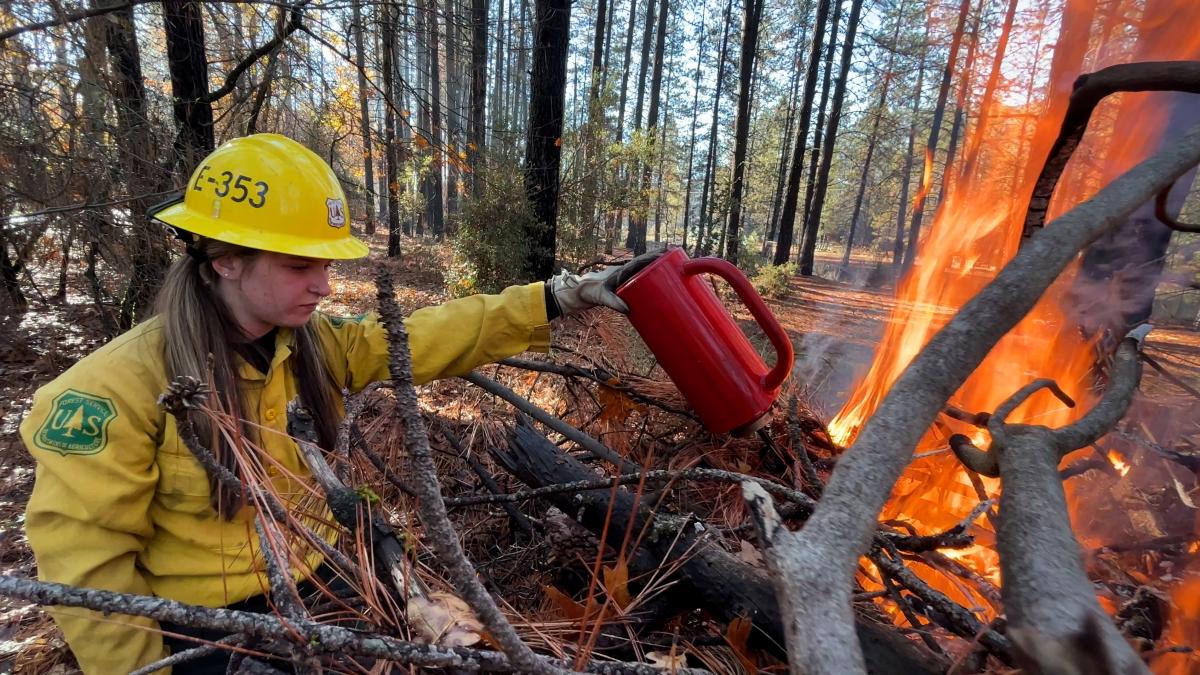
Across the American West, managers of fire-prone landscapes are increasingly using a practice that seems counterintuitive: setting small fires to prevent larger, more destructive ones. Commonly called “prescribed burns,” these targeted, controlled fires keep forests healthy by reducing the buildup of grasses, leaves, branches, and other debris that can fuel larger wildfires and smoke out nearby communities.
But smoke from prescribed burns also presents health risks. Today’s forest managers must ask themselves—how much prescribed burning is too much? When do the long-term benefits of fuel reduction no longer outweigh the short-term smoke costs? And how can nearby communities better prepare for a fire season?
An international team led by researchers at the University of Washington built a framework to help land managers assess the air quality implications of land management scenarios with different levels of prescribed burning. To apply the framework, researchers linked together a series of models that estimate the smoke effects of various levels of prescribed burning on ecosystems and nearby communities.


After using those models to estimate the smoke produced under six different levels of prescribed burning across California’s Central Sierra range, the researchers found that moderate amounts of burning would reduce overall smoke levels. All tested levels of prescribed fires led to less wildfire smoke overall. But greater amounts of prescribed fires could present notable health hazards of their own.
The researchers reported their findings—specific to the Central Sierra landscape—in a pair of recently published papers. The first, published Dec. 27 in Nature Sustainability, estimated how different levels of prescribed burning affected the total amount of smoke produced during an average wildfire season. The second, published Jan. 16 in Environmental Research Letters, analyzed the impacts on the region’s outdoor agricultural workers.
“We haven’t had a good way to put numbers to that smoke exposure trade-off previously because of challenges in integrating data and methods across sectors,” said Claire Schollaert, a UW doctoral alum of the Department of Environmental & Occupational Health Sciences (DEOHS) and lead author of both papers. She is now a postdoctoral scholar at UCLA.
“We know that if we can reduce fuel density, then wildfires may be less severe when they do come through. Emissions may also be lower, and thus subsequent smoke exposure and health impacts will be less. We also must consider that the location and timing of prescribed burns are planned, which is not the case for wildfires. That’s the concept. But I think communicating that has previously been difficult.
“What’s cool about this work is we were finally able to quantify the trade-off between reducing wildfire risks and its impacts on human health through prescribed burning at a local scale.”
Other authors on both papers include Tania Busch Isaksen and June Spector of DEOHS; Ernesto Alvarado of the UW School of Environmental and Forest Sciences and Julian Marshall of the UW Department of Civil and Environmental Engineering, among others. Research for the Nature Sustainability paper was funded by Science for Nature and People Partnerships. Research for the Environmental Research Letters paper was funded by NASA and the US Department of Energy.
Excerpted from the UW News release here. For more information, contact Schollaert at cschollaert@ucla.edu.




